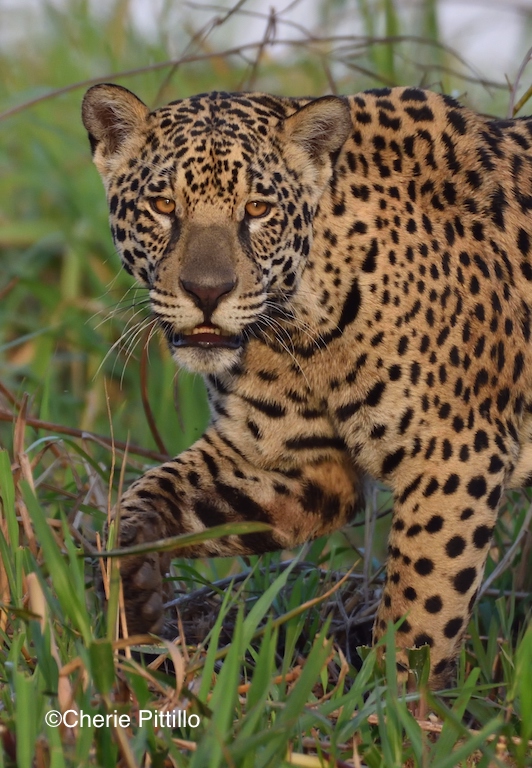The jaguar is a large felid species and the only extant member of the genus Panthera native to the Americas.
The jaguar’s present range extends from Southwestern United States and Mexico in North America, across much of Central America, and south to Paraguay and northern Argentina in South America.
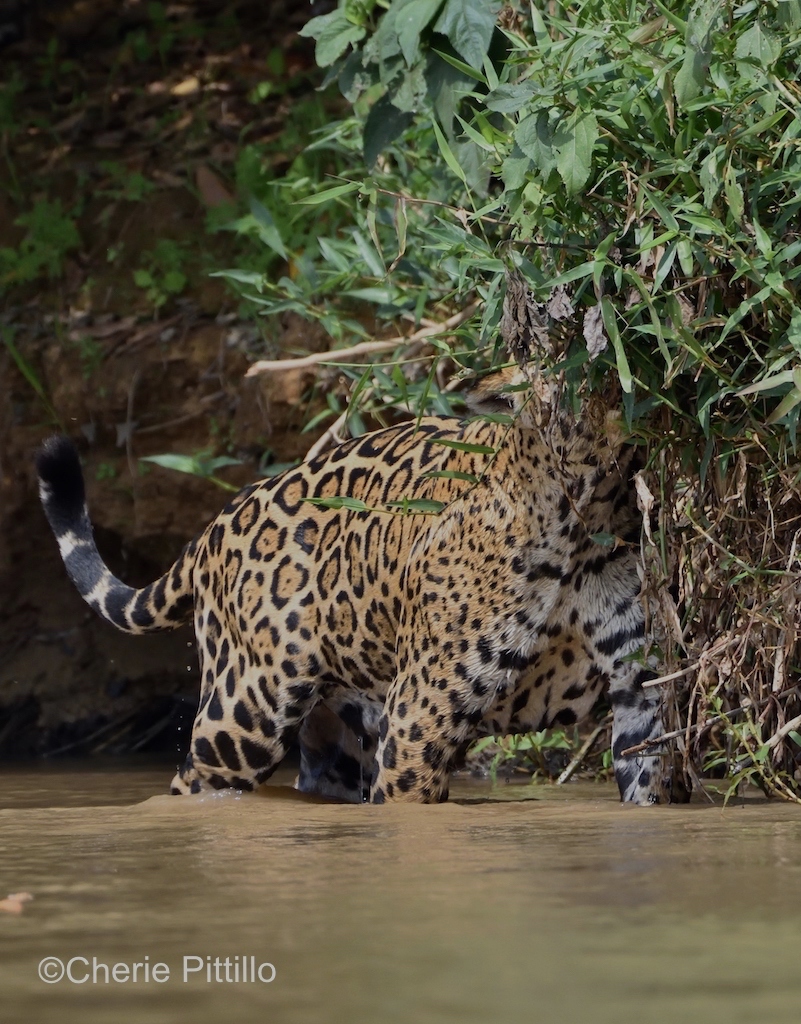
An adult male jaguar may be four to seven feet long, excluding the long tail. Its tail is about 45 to 75 centimeters long. The jaguar stands about three feet high at the shoulder, and it weighs up to 300 pounds when full grown.
The jaguar has heavily muscled forearms and shoulders that add strength for capturing its prey. It has a massive head, and long thick legs. The jaguar’s hindlimbs are longer than its forelimbs to improve jumping. Its forepaws are equipped with long, retractile claws to help grab and hold its prey.
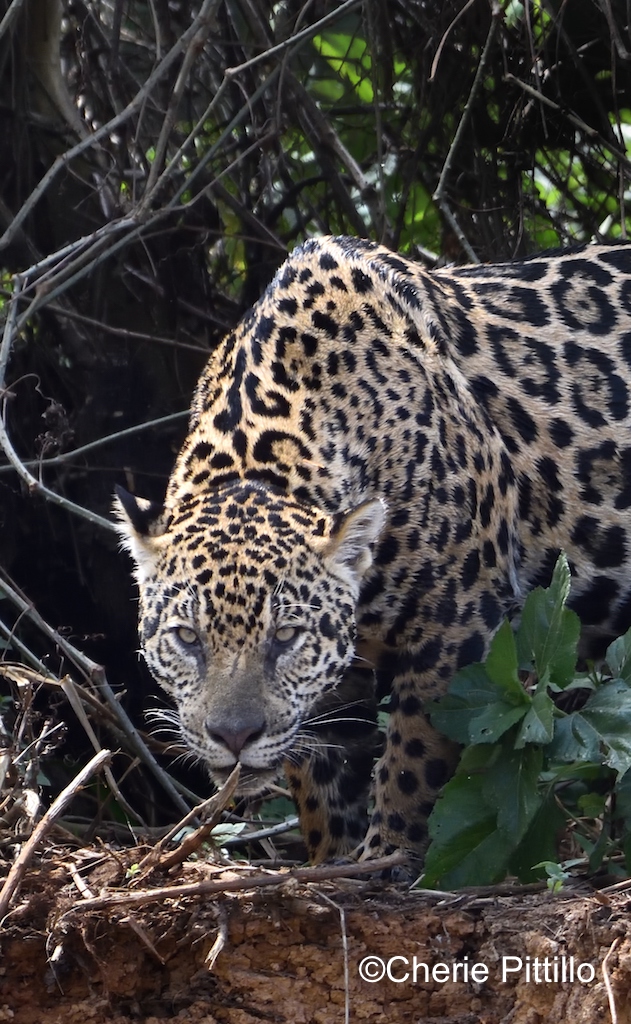
The jaguar has a rough tongue that is designed for peeling the skin away from the flesh of its prey, and to peel the flesh away from its prey’s bones. The jaguar has loose belly skin which allows the animal to be kicked by its prey with little chance of injury.
Humans are the main threat to the jaguar. A jaguar seldom, if ever, attacks humans unless it is cornered. Humans hunt the jaguar for sport, for its spotted hide, and to protect their domestic stock.
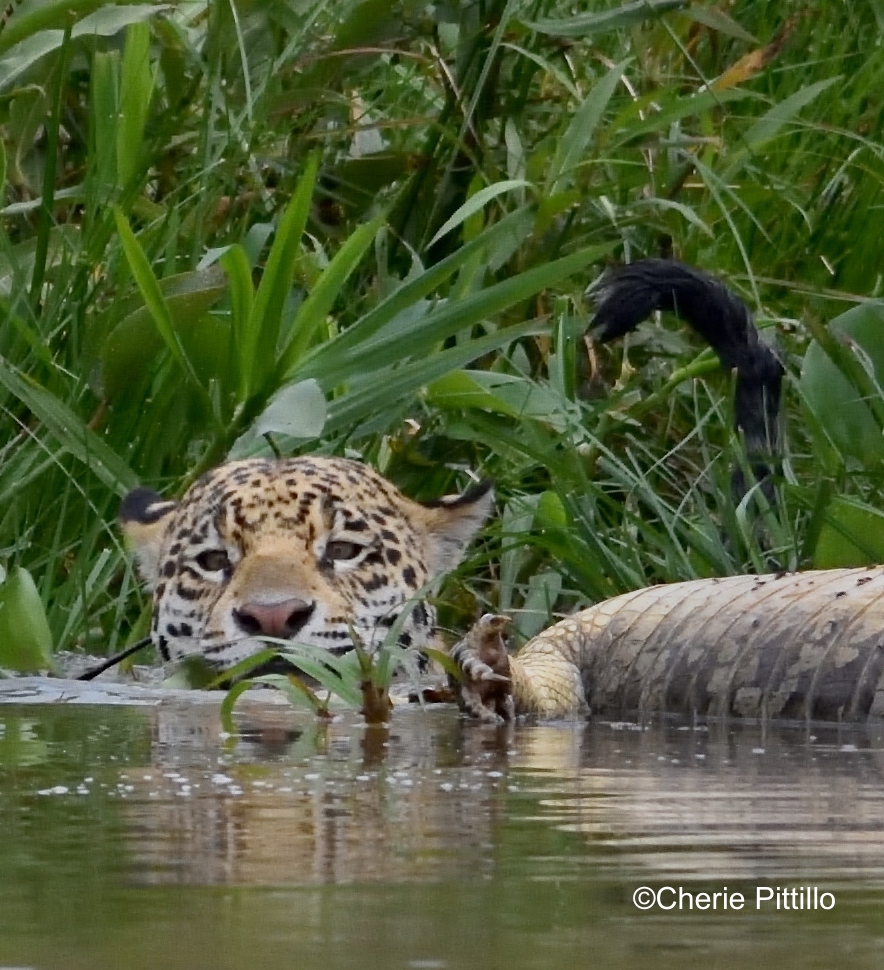
The jaguar is endangered because it is hunted for its fur, and farmers kill the jaguar because it kills their cattle. Jaguars are reputed to be so destructive of cattle and horses that the larger Mexican ranches retain a ‘tiger hunter’ to hunt them or at least drive them away.
Poaching jaguars by hunting is still a problem, as there is a great demand for their coats. Today, there is still poaching, but not nearly as common as before. During the sixties and seventies, around 18,000 jaguars were killed every year for their beautiful coat.
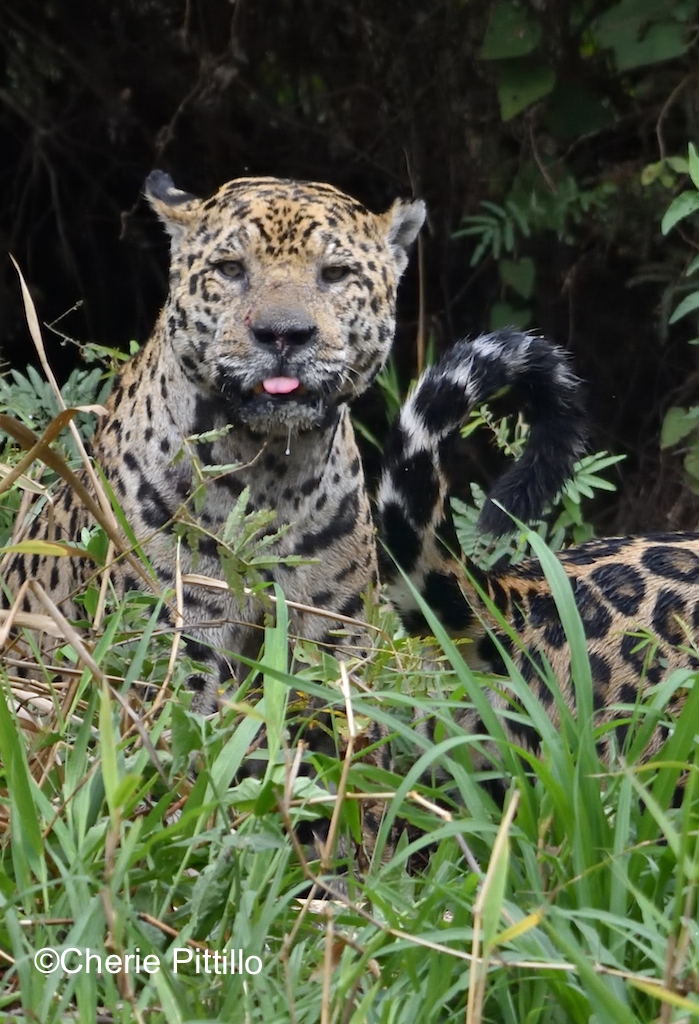
Formerly prized furs, such as those from the leopard, cheetah, or jaguar, may no longer be hunted in the countries where they are indigenous, and many other countries forbid their importation. The Federal Endangerment Species Act prohibits the importation and sale of these furs in the United States.
In addition, special laws that protect certain North American species are enforced in the United States and in Canada, and wildlife refuges have been set up for the purpose of protecting the jaguar. The jaguar is a beautiful and graceful animal; it needs protection and conservation measures so they don’t become extinct.

The number of jaguars has declined over the last 100 years mainly because humans have slashed and burned many of their homelands in Central and South America; new cities are being built, and the forests and grasslands are being cleared.
The destruction of the jaguar’s habitat from logging and cattle ranching as well as having to compete with humans for food has brought a large decease in its population.
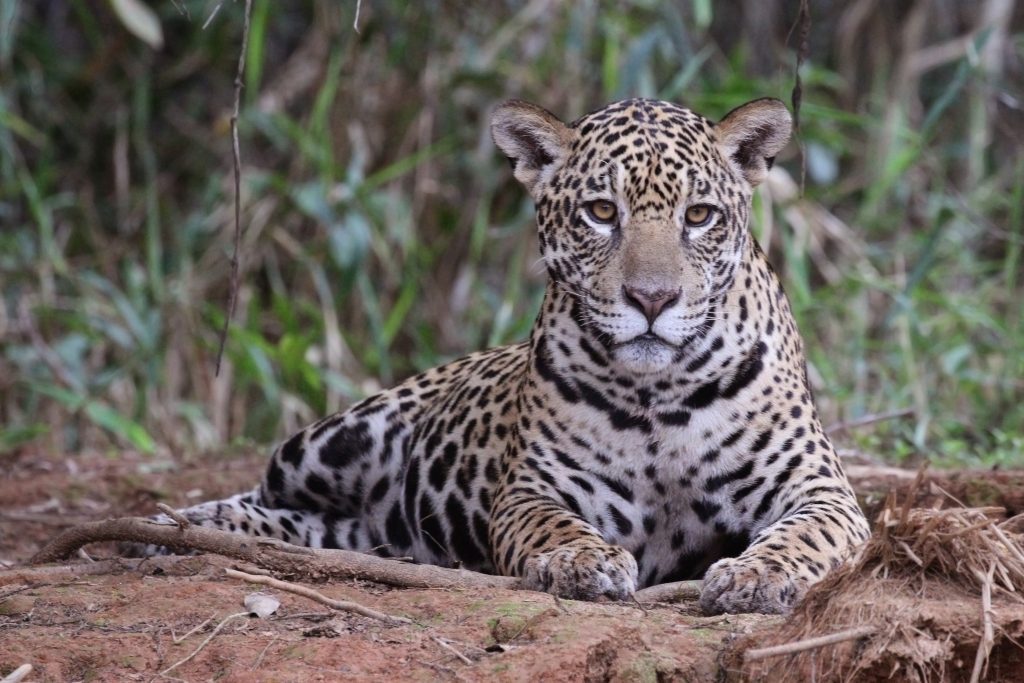
One of the problems experienced by the jaguars is when the grasses that help hide them are dying because of smog problems. More jaguars are killed as the demand for their fur increases. In hunting, the jaguar is usually chased by dogs until it runs up a tree or until it is cornered on the ground; then it is shot.
Governments and civil society have to work together in innovations that reduce deforestation and reduce human/jaguar conflict.
The Yucatan TimesNewsroom

